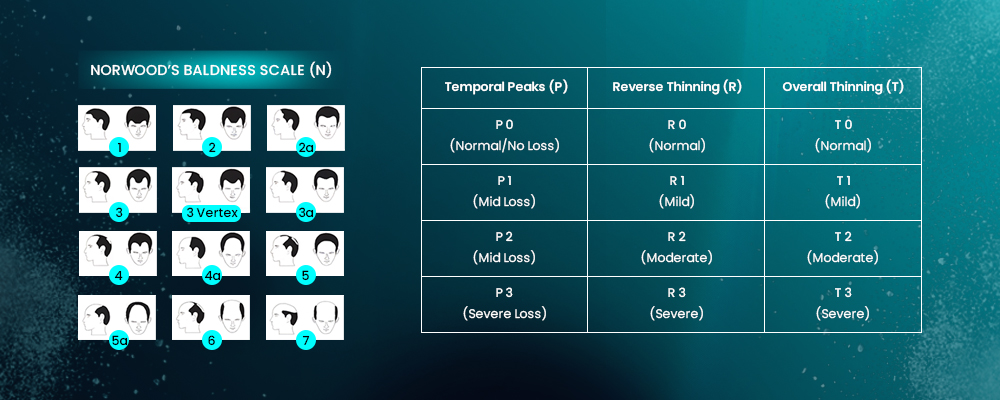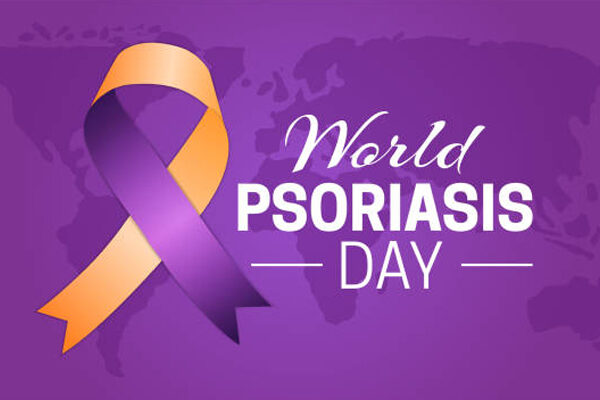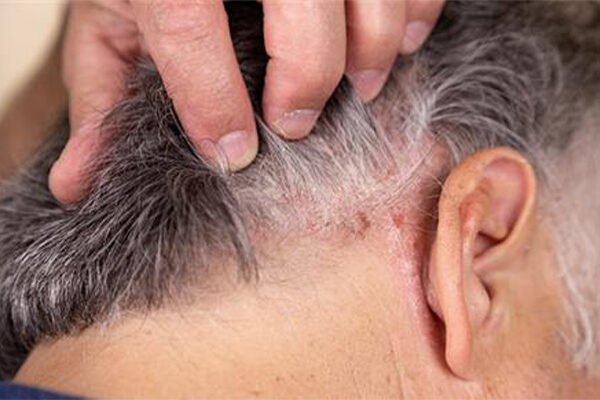
If you or someone you know is experiencing hair loss, there’s hope on the horizon. Clinical trials are being conducted across Michigan, exploring potential new treatments specifically for androgenetic alopecia, offering new possibilities for those affected.
Read along to learn more about this condition, its symptoms, and the treatment options available.
Retrograde Alopecia: What is it?
It is a rare form of hair loss that primarily affects the lower back of the scalp. This progressive miniaturization of hair follicles impacts what is commonly referred to as the “donor area,” potentially complicating the feasibility of hair transplant surgeries.
Often called “vertical alopecia,” retrograde alopecia typically follows a vertical pattern, starting at the nape of the neck and gradually spreading upward into the donor area. In affected individuals, hair follicles in the impacted region are usually finer and weaker compared to those in other types of hair loss.
This condition predominantly affects men over 50 years old, particularly those with a history of severe androgenetic alopecia (male pattern baldness). Patients experiencing this aliment often fall into stage 6 or 7 on the Hamilton-Norwood Scale, which measures the extent of male pattern baldness.
Tracing the Roots: What Causes Retrograde Alopecia?
The exact reasons behind this kind of alopecia remain somewhat elusive, but several factors are believed to contribute to this condition.
- Genetic Predisposition: Family history plays a significant role. Individuals with a genetic predisposition to hair loss, particularly those with relatives who have experienced similar patterns, may be more susceptible to retrograde alopecia.
- Hormonal Imbalances: Hormones, especially androgens, can influence hair growth cycles. While not as strongly linked as in androgenetic alopecia, hormonal fluctuations may weaken hair follicles in the affected areas.
- Autoimmune Response: In some cases, the body’s immune system may mistakenly target hair follicles. This autoimmune response can lead to hair thinning and loss in the occipital region and other affected areas.
- Environmental Factors: External factors like tight hairstyles, scalp infections, and chronic irritation can damage hair follicles, contributing to hair loss.
How is Retrograde Alopecia Different from Androgenetic Alopecia
| Retrograde Alopecia | Androgenetic Alopecia |
|---|---|
| Retrograde alopecia causes hair loss at the donor area at the back and sides of the scalp. | Androgenetic alopecia causes hair loss in a predictable pattern, starting with a receding hairline and progressing to the crown. |
| Retrograde alopecia patients may not be ideal candidates due to the compromised donor zone. However, other treatments like plasma therapies and finasteride may help stabilize hair loss in retrograde alopecia cases. | Androgenetic alopecia patients often qualify for hair transplant surgery using the unaffected donor area. |
Signs at the Margin: How to Spot Retrograde Alopecia
The signs may vary but generally include:
- Gradual thinning of hair at the nape of the neck and along the sides of the scalp.
- A visibly receding hairline in these areas.
- Hair breakage and fragility around the affected zones.
- A smooth scalp where hair loss has occurred, with little to no inflammation or redness.
Early detection is key, as addressing the issue promptly can help prevent further progression.
Diagnosing Retrograde Alopecia
Accurate diagnosis is essential for effectively managing this condition. Dermatologists or hair loss specialists typically use the following diagnostic methods:
- Scalp Examination: A detailed assessment of the scalp helps identify the pattern and extent of hair loss. It often presents as thinning in a vertical band-like pattern starting at the nape of the neck and sometimes extending above the ears.
- Dermoscopy: This non-invasive imaging technique allows specialists to examine the scalp’s surface closely, providing insights into the health of hair follicles and detecting any inflammation or scarring.
- Biopsy: In certain cases, a scalp biopsy may be performed to confirm the diagnosis. A small tissue sample is analyzed under a microscope to determine the exact cause of hair loss, such as inflammation or structural changes in the hair follicles.
Treatment Options for Retrograde Alopecia
While this condition can be challenging to reverse completely, several treatment strategies can help manage and, in some cases, improve the condition:
1. Topical Treatments
- Minoxidil: Often used for other types of alopecia, this FDA-approved treatment can stimulate hair regrowth in affected areas.
- Corticosteroid Creams: These may help reduce inflammation if scalp conditions like dermatitis are contributing to hair loss.
2. Lifestyle Adjustments
- Avoid tight hairstyles that put undue tension on the hair.
- Improve nutrition by incorporating hair-friendly nutrients like biotin, zinc, and omega-3 fatty acids.
- Reduce stress through mindfulness, yoga, or other relaxation techniques.
3. Medical Interventions
- Platelet-Rich Plasma (PRP) Therapy: This innovative treatment involves injecting concentrated platelets from your blood into the scalp to stimulate hair growth.
- Hair Transplant Surgery: For advanced cases, hair restoration procedures may be an option.
4. Prescription Medications
Finasteride or other oral treatments may be prescribed to slow hair loss, particularly in cases linked to hormonal imbalances. It is known to slow the hair loss in 88% of men and stimulate the hair growth in 66% of men.
Prevention Tips
Preventing this condition often involves minimizing risk factors:
- Rotate hairstyles regularly to avoid prolonged tension on certain areas.
- Use gentle shampoos and avoid harsh chemical treatments.
- Protect your scalp from excessive sun exposure, which can weaken hair follicles.
- Stay hydrated and maintain a balanced diet.
Also Read: Bid Farewell to Hair Fall: Practicing Self-Care with Alopecia Areata
Final Thoughts
Retrograde alopecia is a unique form of hair loss that primarily affects the nape, sides, and occasionally the temples of the scalp. Understanding this condition can empower individuals to take proactive measures for managing hair loss effectively. Early diagnosis and targeted treatments, such as minoxidil, PRP therapy, or DHT-blocking medications, can help slow its progression.
Adopting a holistic approach, including lifestyle modifications and professional medical guidance, supports overall scalp health and hair preservation.






